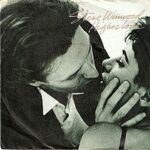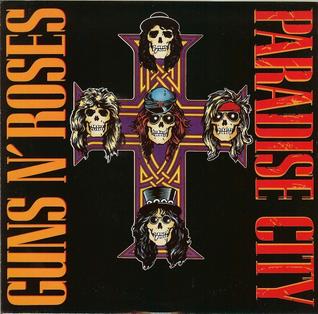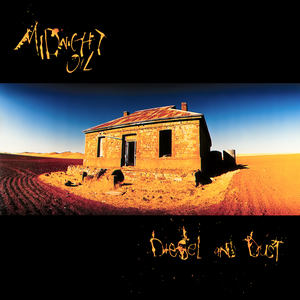 When Steve Winwood released “Higher Love” in 1986, the world was at a crossroads of analog warmth and digital innovation. Pop music was glowing with the polished sheen of synthesizers, gated drums, and bright, echoing vocals that defined the MTV era. But in the midst of this technological explosion, Winwood managed to create something deeply human — a song that combined spiritual yearning, soulful intensity, and pop sophistication in perfect balance. “Higher Love,” the lead single from his album Back in the High Life, wasn’t just a hit; it was a transcendental moment that captured the optimism and ache of an artist searching for meaning in an increasingly fast-paced world.
When Steve Winwood released “Higher Love” in 1986, the world was at a crossroads of analog warmth and digital innovation. Pop music was glowing with the polished sheen of synthesizers, gated drums, and bright, echoing vocals that defined the MTV era. But in the midst of this technological explosion, Winwood managed to create something deeply human — a song that combined spiritual yearning, soulful intensity, and pop sophistication in perfect balance. “Higher Love,” the lead single from his album Back in the High Life, wasn’t just a hit; it was a transcendental moment that captured the optimism and ache of an artist searching for meaning in an increasingly fast-paced world.
At its core, “Higher Love” is a prayer disguised as a pop song. From the moment its lush synth chords and pounding percussion burst through the speakers, the track pulses with a sense of urgency — as if Winwood, now fully matured after years with Traffic and Blind Faith, had found a way to fuse his rock and soul influences into a radiant gospel of hope. The song’s message is universal: that beneath the noise, beyond the cynicism, there exists a deeper, more meaningful form of love — something purer than passion, grander than romance.
It’s a rare track that manages to sound both intensely personal and universally anthemic, and “Higher Love” did exactly that. It not only marked a defining moment in Winwood’s solo career but also helped usher in a new era of crossover sound, blending R&B, pop, and rock into something timeless.
A Song Born from Soul and Spirit
“Higher Love” was released in June 1986 and quickly climbed to the top of the Billboard Hot 100, earning Winwood his first No. 1 hit as a solo artist. Produced by the brilliant Russ Titelman, the song features one of the most inspired collaborations in pop history: the unmistakable voice of Chaka Khan on backing vocals. Her soaring harmonies take the song from great to transcendent, intertwining with Winwood’s rich tenor in moments that feel celestial.
Winwood, who wrote the song with lyricist Will Jennings, approached it not as a love song in the traditional sense, but as a reflection on faith, longing, and the human condition. Jennings later explained that the lyrics were inspired by Winwood’s spiritual background — a yearning for something beyond the material world. The phrase “bring me a higher love” feels like both a plea and a revelation, echoing across the chorus with equal parts joy and desperation.
The instrumentation perfectly mirrors this duality. The track opens with a booming drum machine beat (played by John Robinson), soon joined by syncopated percussion, gleaming synth textures, and Winwood’s intricate multi-instrumental layering. Despite being an electronic production, the groove feels organic — alive. Every element breathes. And then there’s that soaring chorus, one of the most instantly recognizable refrains in pop history.
Winwood’s Evolution: From Rock Virtuoso to Pop Visionary
To understand why “Higher Love” hit so hard, you have to look at where Steve Winwood came from. By 1986, he was already a legend, though his fame had evolved quietly. As the teenage prodigy behind the Spencer Davis Group hits “Gimme Some Lovin’” and “I’m a Man,” Winwood had been a star since the 1960s. Then came Traffic, where he stretched out into psychedelic and progressive rock, and later Blind Faith with Eric Clapton — short-lived but iconic.
But after those heady days, Winwood retreated into relative obscurity. The 1970s were spent honing his skills as a studio wizard, learning production, synthesizer programming, and mixing. By the time he re-emerged as a solo artist in the early 1980s, he had become a self-contained musical force.
His 1980 album Arc of a Diver was entirely self-performed and produced — a blueprint for the creative control that would define his later work. With Back in the High Life, however, he struck the perfect balance between introspection and accessibility. He embraced collaboration again, and “Higher Love” was the dazzling result — a moment where everything he’d learned converged.
The Power of Chaka Khan’s Voice
While Winwood’s performance anchors the song, it’s impossible to talk about “Higher Love” without praising Chaka Khan’s stunning contribution. Her background vocals don’t merely support Winwood — they electrify him. During the chorus, her presence transforms the track from a pop song into a gospel revival. It’s as if she’s channeling divine energy through every syllable.
The collaboration was a match made in heaven, and their chemistry was undeniable. Khan’s call-and-response harmonies evoke the sound of a choir, a celestial echo that amplifies the song’s spiritual message. It’s the kind of vocal partnership that elevates both artists, and it earned both Winwood and Khan Grammy Awards: Record of the Year and Best Male Pop Vocal Performance in 1987.
It’s worth noting how effortlessly Khan’s soulful phrasing merges with Winwood’s English restraint — two voices from different worlds, blending into one transcendent sound. Together, they captured the essence of what “Higher Love” represents: unity through music.
The Sound of the ’80s, Without the Excess
There’s no denying that “Higher Love” is a quintessentially 1980s song. It has all the hallmarks — the gated reverb drums, the synth pads, the bright production polish. But what sets it apart is its sincerity. Where many ’80s hits sound dated or overly synthetic today, “Higher Love” still feels alive.
That’s because Winwood infused every note with human touch. He wasn’t chasing trends; he was interpreting them through his own lens of soul and craftsmanship. The rhythm section feels taut but never robotic. The synths shimmer, but they never overwhelm. The mix leaves room for breath — for emotion to linger.
Russ Titelman’s production deserves special recognition here. He knew how to make every frequency count, layering instruments like brushstrokes rather than stacking them in clutter. Even decades later, the song’s mix feels perfect: modern enough for its time, yet timeless in its spirit.
A Message That Resonates Across Generations
Lyrically, “Higher Love” transcends the boundaries of genre or era. Its words are simple, but profound:
“Think about it, there must be higher love, / Down in the heart or hidden in the stars above.”
That sentiment — that hope for a greater connection — is as relevant today as it was in 1986. It’s not just romantic love being sought here, but something cosmic, something spiritual. In a decade often criticized for its materialism and excess, Winwood’s call for higher meaning stood out like a beacon.
This is perhaps why the song has endured so gracefully. It speaks to anyone who’s felt disillusioned, lonely, or yearning for something more. Its message is universal, yet deeply personal. It’s the musical equivalent of looking up at the night sky and remembering there’s more to existence than the immediate.
Cultural Legacy and Rebirth
Over the decades, “Higher Love” has found new life again and again. In 2019, Norwegian DJ Kygo released a reimagined version featuring Whitney Houston’s previously unreleased vocals — originally recorded in 1990. The remix became an international hit, introducing a new generation to the song’s uplifting power.
While Kygo’s version leans on modern production, it honors the spirit of the original. Houston’s vocals bring even more gospel fire to the lyrics, reinforcing the song’s timeless message. The success of that remix is a testament to how enduring Winwood’s composition truly is — it’s a song that can live in any era because it speaks to the most basic human desire: the need for hope.
Meanwhile, “Higher Love” continues to be featured in films, commercials, and television shows. Its use in media often accompanies moments of emotional triumph or revelation — proof of how deeply ingrained it is in the cultural psyche.
Why “Higher Love” Still Matters
In the decades since its release, countless songs have tried to blend pop sophistication with spiritual yearning, but few have achieved the seamless perfection of “Higher Love.” It’s a reminder that faith, in whatever form we find it, doesn’t have to be solemn or abstract — it can be danced to, sung out loud, celebrated.
The song also stands as a triumph of musical authenticity. At a time when glossy production often overshadowed substance, Winwood proved that technology could enhance humanity rather than replace it. His blend of analog warmth and digital precision created a sound that was both of its time and beyond it.
Most importantly, “Higher Love” endures because it offers something rare: optimism without naivety. It’s a song for the weary and the hopeful alike, urging us all to believe there’s something better — within ourselves and beyond us.
Conclusion: A Song That Still Lifts Us Higher
“HIGHER LOVE” isn’t just one of Steve Winwood’s greatest songs — it’s one of pop music’s most enduring hymns to the human spirit. Since its release in 1986, it has remained a symbol of transcendence, its message as relevant now as ever. Whether through Winwood’s soulful original or Whitney Houston’s posthumous revival, its heartbeat endures: that search for something greater, something worth believing in.
There are songs that make you move, and songs that make you feel. “Higher Love” does both — it gets inside you, lifts you up, and reminds you that no matter how dark things get, there’s always light to be found in the rhythm of faith and the melody of hope.
More than three decades later, Steve Winwood’s masterpiece still feels like an open invitation — to rise above, to seek the better parts of ourselves, and to bring a little more “higher love” into the world.


